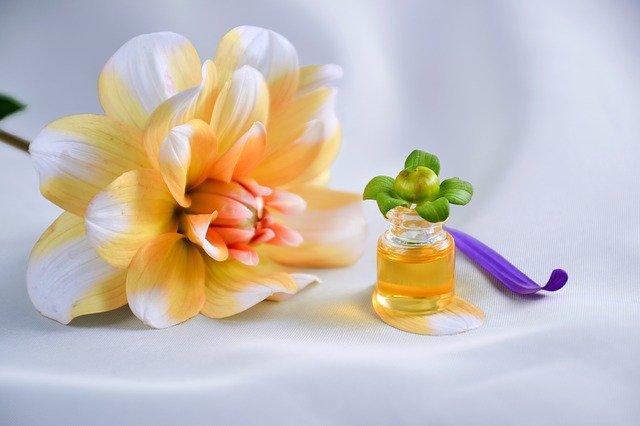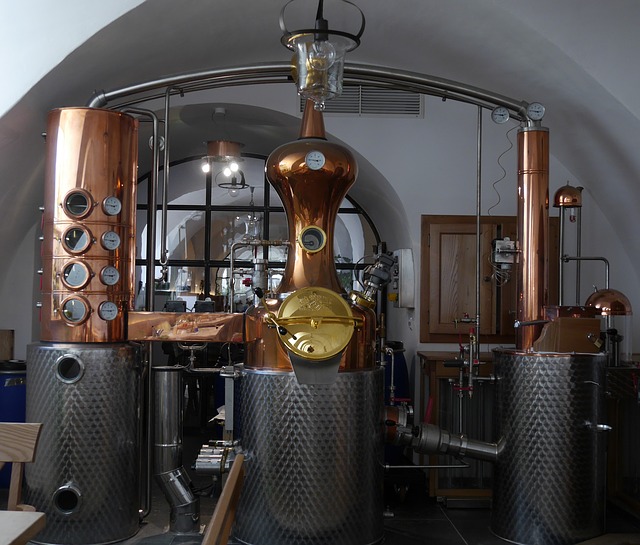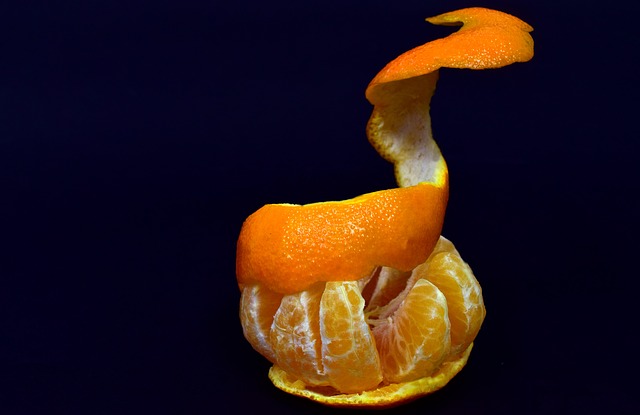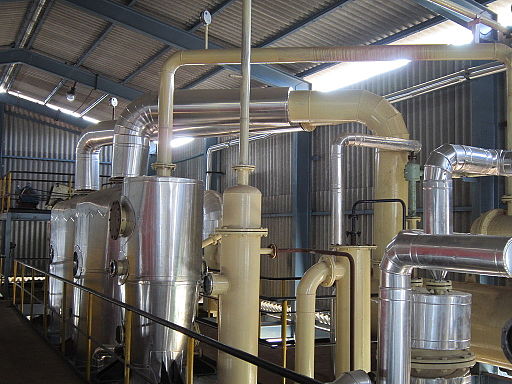How Are Essential Oils Made

Essential Oils can be made in several different ways. Below is a description of methods to make essential oils and how to make essential oils from herbs.
Essential Oil Steam Distillation

Most essential oils are distilled in a distillation apparatus, called alembic. Higher quality alembics are made from copper, food-grade stainless steel, or glass. Raw plant materials, such as flowers, leaves, stems, bark, seeds, or roots of shrubs are put into an alembic over water, which is then heated to the boiling point. The steam passes through plant material and vaporizes the volatile compounds. The vapors pass through a coil, where they condense back to the liquid and are then collected in the oil-water receiver/ separator also known as essencier. After the steam distillation process, oil and recondensed water are separated. The remaining water is called hydrosol, hydrolat, flower water, or plant water essence. It can be used for several things, including aromatherapy, cosmetics, etc…
How To Make Essential Oils At Home
There are several ways to make essential oils. The easiest way is by steam distillation. All you need is a distillation apparatus. Such a distiller can be bought from 100 dollars onwards. The glass distiller is best suited for beginners, as it does not require a lot of know-how, only distillation ingredients, and a distiller.
I have been distilling my oils for years and 2 l distiller is more than sufficient for my needs. I prefer to distill laurel, rosemary, sage, thyme, mint because I take into account their active ingredients as well as yielding.
Start Making Your Own Essential Oils- Check The Offer Bellow
 |  |  |  |  |
|---|
Cold Pressed Essential Oils

Cold pressing was the first method of oil and essential oil extraction, before the discovery of distillation. It is still considered as one of the best methods for oil extraction, especially for food oils pressed from seeds and nuts, such as olive oil, flaxseed oil, or pumpkin seed oil. Nowadays certain essential oils are still extracted with this method, citrus peel oil for example. In this method, there is no *heat* involved to extract oil, it is extracted below 80°F or 27°C, so the oil isn’t denatured or changed by high temperature. Cold-pressed oils contain water, oil or volatile aromatic compounds, and fine pulp, which must be filtered in order to purify the product. Usually, the oil is left to sit down for a few days, so the water and oil are separated. The end product is then filtered, and possibly heated, so the microorganisms are destroyed.
Solvent Extraction Of Essential Oils

The majority of flowers contain too little volatile oil to be cold-pressed. They contain delicate chemical components that can easily get denatured by the high heat used in steam distillation. Therefore, they are extracted by solvent extraction. The most used solvents are hexane, supercritical carbon dioxide, and ethyl alcohol. Essential oils extracted by solvents are called absolutes and should be labeled on the bottle.
Solvent extraction using hexane has been widely used on an industrial scale for the extraction of volatile aromatic compounds from several types of flowers. Extracts from hexane are called concretes, which are a mixture of essential oil, waxes, resins, and other lipophilic (oil-soluble) plant material. Concretes are treated with alcohol to separate aromatic compounds from the waxes. Once separated, alcohol is evaporated in order to purify the product.
Hexane extraction has come under much criticism, due to the possibility of a non-pure product, potentially being hazardous. Hexane is typically not 100% pure, therefore some impurities or even solvent can be left in the oil. Absolutes or solvent extracted oils should not be used in aromatherapy. They are generally used in perfumery, soaps, candles and other scented products.
CO2 Extraction Of Essential Oils
Supercritical carbon dioxide can be used as a solvent in a more advanced method of essential oil extraction. In this method, plant materials are put in a vessel designed to withstand high pressure, and the CO2 is pumped through at a controlled pressure and temperature. CO2 acts as a solvent, therefore concrete ( wax and aromatics ) is extracted. Waxes and aromatics are then separated with liquid carbon dioxide. This method is considered a cleaner method. It can avoid petrochemical residues and the loss of some top aromatic notes, compared to steam distillation. There are 2 main types of CO2 extraction, known as Supercritical and low-pressure cold extraction. Supercritical carbon dioxide is CO2 that is at a temperature 30.95°C or 304.1 K and pressure at 7.38 MPa or 72.8 atmospheres pressure. Low-pressure cold extraction is when CO2 is cooled to 1.6°C-12.7°C or 35- 55°F and pressure at 800-1500 psi. In this method, there is less risk of high-pressure damage to the molecular structure of aromatic compounds.
A method with ethyl alcohol extraction is another option to extract essential oils. This method requires high-quality alcohol, eg. organic grain alcohol, which has to be evaporated in order to get essential oil. Special safety procedures are required in this method, as many solvents are highly flammable. Alcohol has to be evaporated in a well-ventilated place, gas burners must not be used, due to highly flammable solvents. Although a very effective method, impurities stay in the product as the alcohol evaporates, therefore a more sophisticated method is used, called Vacum distillation to make essential oils using ethyl alcohol extraction. Ethyl alcohol extraction is often used to make the liquid herbal extract.
Enfleurage Extraction Method
This method is one of the oldest ways to capture fragrance compounds from the plants. This process uses odorless fats that are solid at room temperature, such as animal fat. It is an obsolete, inefficient and costly technique that is now superseded by more advanced methods such as supercritical fluid extraction. There are 2 processes, known as cold enfleurage and hot enfleurage.
Cold Enfleurage
In the traditional cold enfleurage technique, a large framed glass was coated with a thin layer of odorless fats, such as lard from pig or beef. The flower petals or other botanical matter were then placed on the fat and left for a couple of days, which allowed to diffuse its aromatic compounds into the fat. After 1-3 days, the process was repeated by replacing the old botanical matter with a fresh one, until the desired degree of fragrance saturation has been reached. This method was developed in the 18. century in France, as a technique for the production of high- grade concentrates. Aromatic fat, also known as pomade, was then soaked in pure alcohol, which absorbed the aromatic compounds. Alcohol was then evaporated, leaving the essential oil. The remaining fragrant fat was then used to make soaps and other cosmetics.
Hot Enfleurage
This simple technique also called maceration is considered the oldest known method for preserving plant aromatics. Solid fats and plants are heated in a container that is placed in hot water in order to speed up the process. Similar to cold enfleurage, it requires spent plant matter to be repeatedly strained from the fat and replaced with fresh plants until the desired degree of fragrant saturation has been reached. This method is quite similar to solvent extraction, only with oil replacing the solvents.
There is another inexpensive and simple way of enfleurage that uses olive oil instead of fat. The botanical matter is soaked in olive oil, and similar to cold and hot enfleurage, it requires to replace old plant matter with a fresh one every so often, until the desired fragrant is achieved. Filtered oil can be used as scent, basic for homemade ointments, soaps, etc….
♦️Learn More About Essential Oils- Click Here♦️
 |  |  |  |  |
|---|
Disclaimer: All information presented on this website is for informational purposes only. These statements have not been evaluated by the Food and Drug Administration. This website is not intended for diagnosis, treatment, treatment or prevention of disease and is not intended for substitution treatment. This information is not meant to cover all possible uses, precautions, interactions, or adverse effects. This information may not fit your specific health circumstances. Never delay or disregard seeking professional medical advice from your doctor or other qualified healthcare providers because of something you have read on whatcure.com. Please seek the advice of a healthcare professional for your specific health concerns.







